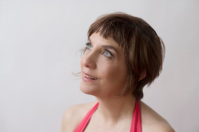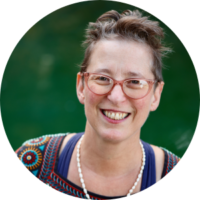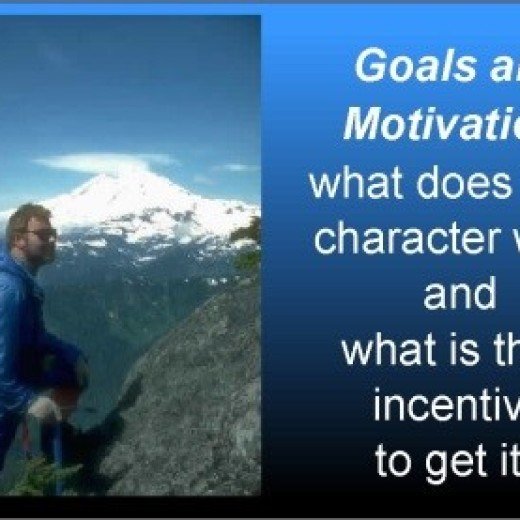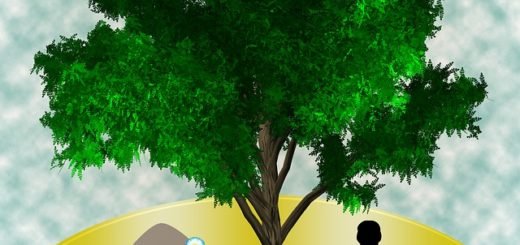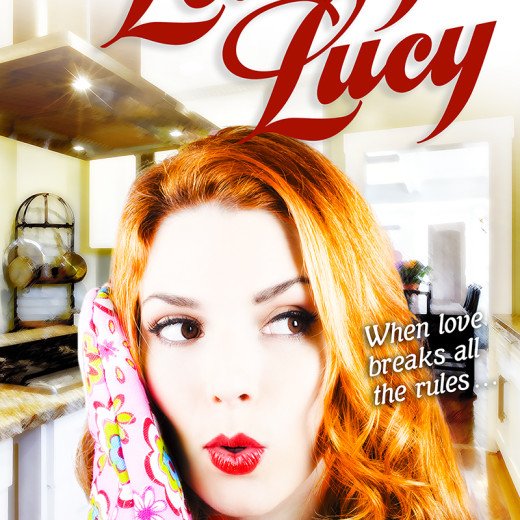Permission to be Creative with Nina Hart, Part 2
Permission to be Creative with Nina Hart, Part 2 – How To Write the Future podcast, episode 60
“Because I think like so many of us need to unlearn things. And also the process of saying Yes to material and opening the top of your head is, it is a gift, I think, to learn to come to creativity in that way.”
In “Episode 60, Permission to be Creative with Nina Hart (part 2 of 2),” host Beth Barany, creativity coach and teacher, and science fiction and fantasy novelist, talks to writer, performer, and fellow creativity coach and creative entrepreneur, Nina Hart, where they discuss giving yourself permission to practice being creative in your own way, including a fun writing prompt dealing with jello.
Platforms The podcast is available on Apple Podcasts | Google Podcasts | Buzzsprout | Spotify | Podcast Addict | Amazon Music | Youtube
RESOURCES
Free World Building Workbook for Fiction Writers: https://writersfunzone.com/blog/world-building-resources/
Sign up for the 30-minute Story Success Clinic here: https://writersfunzone.com/blog/story-success-clinic/
Get support for your fiction writing by a novelist and writing teacher and coach. Schedule an exploratory call here and see if Beth can support you today: https://writersfunzone.com/blog/discovery-call/#
About Nina Hart 
Nina Hart is the founder of “Writing from the Top of Your Head” workshops. She offers writing workshops and 1:1 first draft book coaching, and is a certified KaizenMuse Creativity Coach and Gateless Method writing facilitator. Her first collection of surreal short fictions called “Somewhere in a Town You Never Knew Existed Somewhere” was a finalist in Foreword Reviews’ IndieFab Book of the Year Awards.
Nina spends her time as a right-brained, highly sensitive, creative entrepreneur. She is passionate about helping writers find their voice and reclaim the hooligan kid spirit that most people have buried under an “adult” veneer. Nina considers herself to be an improvisational writer — she was a blocked writer until she rediscovered the curious part of herself who could play, experiment, and explore. She offers online workshops, writing retreats, and 1:1 coaching. She plans to offer a facilitator training in the upcoming year
Connect with Nina:
Website – www.writingfromthetopofyourhead.com
Facebook / Instagram / LinkedIn
Sign up for Nina’s newsletter to join FREE creativity chats + prompts monthly via Zoom. You’ll also get other freebies like “16 Writing Prompts to Slay Perfectionism” ebook. https://nina.podia.com/creativitychatsprompts
ABOUT THE HOW TO WRITE THE FUTURE PODCAST
The How To Write The Future podcast is for science fiction and fantasy writers who want to write positive futures and successfully bring those stories out into the marketplace. Hosted by Beth Barany, science fiction novelist and creativity coach for writers.
Tips for fiction writers! This podcast is for you if you have questions like:
- How do I create a believable world for my science fiction story?
- How do I figure out what’s not working if my story feels flat?
- How do I make my story more interesting and alive?
This podcast is for readers too if you’re at all curious about the future of humanity.
Transcript for episode 60 Permission to be Creative with Nina Hart (part 2 of 2)
Intro and welcome –
Beth Barany
Are you looking for a way to dig into your world, building for your story?
Maybe you’re stuck. Maybe you don’t know where to begin.
Maybe you have so many ideas you don’t know how to organize them.
Well, If you would like to bring your story world alive for your readers, then I recommend you check out my World Building Workbook for Fiction Writers now available.
It’s at how to write the future.com.
Just head on over there. Click, sign up, put your name and email.
And there you go. That workbook will be delivered to your inbox straight away.
Welcome!
Hey everyone. Welcome back to another episode of How to Write the Future. I’m very excited to bring this interview to you today.
A little bit about our podcast.
This is a podcast for science fiction and fantasy writers who want to write positive optimistic futures and for anyone who cares about the future because when we envision what is possible, we help make it so.
Coming soon – Nanowrimo
I’m excited to bring to you part two of my interview with Nina Hart.
I just want to remind everyone as we enter into the fall that NaNoWriMo is coming. NaNoWriMo, if you don’t know is a challenge. that stands for National Novel Writing Month. It is a great time to write your novel with a sense of play and freedom. And the stated goal of this free challenge is to write a 50,000-word novel in the month of November.
Now a lot of people start novels, play with new ideas, write a really sloppy, crappy first draft. And sometimes for the very first time.
Or some people use it to write their new books every year like my husband often does, thriller writer Ezra Barany.
And some people like myself, I use it often to edit my novel.
My cat here wants to say, hello, this is Rocket, everyone. Say hi to everyone, Rocket.
So for those of you listening on podcast, my cat just glanced at the camera. Uh, and now he’s in my lap, curling up like a shrimp, partway upside down.
So why am I excited about sharing about NaNoWriMo with you?
I have a whole suite of tools to help you get ready to write your book.
So I’ll be sharing more of that information in the upcoming podcasts.
If you want to jump into what those tools are, go over to plan your novel.com. And that link will be in the notes that accompanies this podcast.
All right.
Part Two Of My Interview with Nina Hart
Back to part two of my interview with Nina Hart.
In part two of this interview, we are going to talk about the value of permission to be creative. We’ll also talk about how to elicit greater flow in your writing. There’s a fun writing prompt, dealing with jello so stay tuned for that.
And we’ll also talk about prioritizing process over product, self-care, and a lot more. So thanks for listening.
Stay tuned for how to stay in touch with Nina Hart and her program, Writing from the top of your head.
And if you have any questions for Nina, please do contact her. If you have any questions for me, please contact me. All right on with part two. Oh, if you have not listened to part one, you might want to go ahead and listen to part one of this interview, episode 59. All right. On with the interview!
The Value of the Permission to Be Creative
Well, I wanna jump right into permission. I know we can talk specifically about how you help your students elicit greater flow in their writing, but I think we need to start with permission first, and maybe that’s one of the ways in which you do that.
NINA HART
Yeah, as a creativity coach, you and I talked about the value of permission. And in Kaizen Muse coaching, it’s like a physical thing. You actually pass a little slip along to your clients. You can do it for yourself, but somehow make it tangible, instead of just a thought.
I’ll give an example, a little story that happened in my life the other day.
I have a friend who has a fierce book of poetry that wants to come out of her around an issue of an old relationship that was very hard for her. And she ran that idea past a friend who said, “Oh, but you have to study poetry first before you can– poets write poetry.
And I was like, oh, no. I better send the policemen, firemen out to that. Put out that fire because it’s so fundamental. We all have this inside of ourselves.
Not only do we not give ourselves permission to be creative in the first place because we’re supposed to be working, worker bees and creativity is play and not work, or it’s work, but then it’s perfectionism.
There’s so many pitfalls there, but also permission.
Already, again, back to Freire. Have enough inside of ourselves that we know how to tell a story. We know how to write a book of poetry that wants to boldly, fiercely come out of us right now. We can always edit later. We can get someone to help us at it.
That impulse to create unfortunately needs permission. It just made me realize how rampant it is in our culture that there’s so many things we need to feel, we need to qualify for in order to be an artist.
BETH BARANY
Yeah.
And that we can’t just reconnect to that child self that had no self-consciousness about picking up a crayon and making marks on a page.
NINA HART
Yes.
Elicit Greater Flow in Your Writing
BETH BARANY
As a little one. Yeah. So what are some of the ways in which you help your students really get into that, elicit the greater flow in their writing?
NINA HART
There are so many ways, so many. First, through play, permission to play, permission to write badly, permission to write purposely badly. Permission to make it even atrocious.
Giving nonsensical prompts and also practicing because when we’re focused on product, on creating that end result, don’t get the curiosity and the play.
We don’t get to get lost in what we’re doing and not know where we’re going. And it’s so important to not know where we are going.
Writing Prompt: Jello
So I always say to my students, try this prompt at home. Maybe a lot of times, and think of it as throwing jello on the wall.
Sometimes the jello will stick cause it’s a humid day, and sometimes it’ll just roll off, and then you get to pick it up and throw it again.
And that’s an attitude toward generating material over and over and over and generating a lot of stuff that we may not like, but it’s in the generating that gives us so much meat to go on.
And I’ll just add: eliciting imagery, associative writing, putting two things together that don’t fit and making a story out of that, or 10 things that don’t seem to connect, but making connections through our creative mind.
BETH BARANY
I love it. I love it. And it’s so interesting when you said, it’s important not to know. And my story brain said, “No!” Because on the one hand, I totally get it. if you say to me, write a scene where your protagonist discovers a clue. That’s enough for me to get going.
That’s more of a start than an end. I know she’s going to discover a clue ’cause I write about an investigator. But I don’t know what the clue is. And that’s actually how I write my books, is I’m like, there’s gonna be a dead body. And I’m like, I don’t know who the dead body is. I don’t know why. I don’t know what the clues are there gonna help them solve it.
So I’m using the framework of a mystery to drive the story, and it does give me enough guidance so that I can, And I know the structure of that kind of story that I can write into the unknown, but I can’t have nothing in mind. Otherwise, I may as well just pick up a pen and do doodles, which I love to do.
Which totally is the unknown. And then of course as you put, markings on a page, then it calls to me like, oh, more red, more green, more, more swirly this way, more whatever.
So, it’s interesting that response.
And what I noticed with the writers that I work with is they too want some guidance. Some of them want to know in great detail, like my husband. He can put outlines in great detail, makes him very happy, and when he sits down to write, he knows exactly where he is going. And he does invent a ton of things.
And then some writers don’t want to know at all where they’re going, and they’re perfectly happy just seeing what comes out.
Then there’s people like me who need some structure.
So it is just interesting.
Even now as I enter the editing process, I very much have the mindset of, well, lemme try this, lemme try that. Let me see what this is like. What about this? Maybe that, and especially at this stage I’m at where I’m just reading the book for the first time after I wrote it.
Now I’m like, Hmm, maybe this, maybe, maybe add that. Well, what about this? And I’ll be in that state pretty much about two-thirds of the way through the revision and the editing process. And then at some point, I’m like, yeah, that’s it. So it takes me a while.
So there’s, I love the discovery process.
It’s like, what else wants to come forth? And I’m responding to the material that I’ve already created, or to something that happened to me in the day or something I read or saw. I’m like, oh, let’s add this piece in.
NINA HART
You just described so much of the process. and, I agree. We can’t be thrown out there with nothing, that we need these guidelines, boundaries.
They did a study with some children where they put them in a big field and the field had no fence around it, and they all huddled together in the middle of the field, and then they put them in an area that had a fence around it, and they could play wildly.
So I think that there is something in our primal brains that need that sense there is some kind of guideline here, boundary, that then allow us to get into curiosity and asking all those questions.
Yeah. So just setting it up is is an art, and everybody’s different, as you just said too. There’re all kinds of writers: plotters, pantsers as we call them, and everything in between.
BETH BARANY
Yeah. Yeah. I liken it to having a playground that has certain equipment and then it’s boundaried and, okay, now, now go play. And, and every child will use the equipment differently, run around it in different order, have a different relationship with the things and the people.
Yeah, I agree with you. There’s something about being a human being that we actually thrive in structure, a certain kind of structure. And of course, the trick is finding the right structure for you, for anybody, for each individual.
Prioritize Process Over Product
You mentioned that you prioritize process over product, and I’m wondering how you help people create some structure, the safety, the sense of safety that we’re talking about, while they go through the wild unknown of being a hooligan through their creative writing.
NINA HART
My eight-module online program called Writing From the Top of Your Head- it’s really designed to take a writer through a process that is all about process because so many writers that come to me- they’re bloggers or they’re lawyers, or former MFA students, or people who had been inundated with that controlling thinking mind, and like myself, all those conditions I put on myself.
So through the process of the program, there is a freedom that is practiced. It’s not one-and-done. It’s a practice. But allowing yourself to unwind and unlearn things can help on so many levels, which is also partially why I’ve woven in the creativity coaching tools in there because they allow us to normalize the process of creativity.
So if you are in a place where you’re midway through your book and you’re like, oh my gosh, this is chaos, but you have no name for the chaos. In creativity coaching, we call it creative chaos. That’s normal and this is what it feels like. And you’re birthing a book, you’re, you’re in the labor process.
It’s never pretty. Right?.
And so there are all kinds of tools that help bolster the process.
BETH BARANY
Mm-hmm.
NINA HART
Because I think like so many of us need to unlearn things. And also the process of saying Yes to material and opening the top of your head is, it is a gift, I think, to learn to come to creativity in that way. So I hope that answers your question in a very winding way.
Self-Care
BETH BARANY
Yeah, I think so. We’ve touched on process and permission.
And the next question I have for you that you actually offered me, and I really love it, which is about self-care.
There’s the work and the practice and the stretching and doing the bold move, doing the risky move, but then there’s rest.
And then you mentioned Alpha State, which I’m fascinated by.
I would love to hear more about that, about the importance of rest, about the importance of the Alpha state, and if you could define the Alpha State for us ’cause I’m not sure I know what that means and how that plays with the process that you teach.
And that, practicing of taking those risks and writing from the top of your head, which sounds to me like a very adventurous Dr. Seuss kind of thing. I think the top of the head popping off and all these things coming out and you’re like, woo, what is all that? And just having that exploratory mindset and stance.
Tell us some more about risk. What came out was risk instead of rest.
I would just say in our culture, the notion of resting, the notion of pausing, the notion of not doing anything is like a risky move.
NINA HART
Yeah.
BETH BARANY
Right? Because there’s traditionally, so much pressure. I think we’re changing the paradigm, but so much pressure to always be active.
But actually, even physiologists and athletes know that when we rest, that’s when our muscles get stronger after a workout. So…
NINA HART
Yeah. right? Or a guitar player, if they stop playing guitar for a little while, they come back to it and they’re like, why am I better all of a sudden?
There’s so many things we don’t know about the mind. Like what if we imagine playing guitar? Studies are being done and it’s fascinating.
I think the whole gosh, I had an idea, and this is my little ADHD brain. It’s like you just give me so many ideas through your questions.
Oh, it’s counterintuitive to rest. That’s what I was going to say.
So, when we push, push all the time, it’s gotta have the opposite medicine there.
The Alpha State
What’s so cool about the Alpha State, and I am not a scientist, so don’t quote me on any of this, but from what I know about the Alpha State, it’s that place that we get to when we’re taking a walk or we’re doing the dishes or we’re in the shower, or driving– those non-thinking times.
We need more of that, like watching the birds in our culture. We just need more of that.
But I do believe that is where creativity comes from.
And I was going to mention Emily Dickinson who said it should feel like the top of your head is open. That is poetry.
I feel like the Alpha State is a moment of, oh, the top of my head is open. I am open to ideas that I wouldn’t normally be open to when I’m trying to force them.
So, you know the value of like, you’re working on a chapter and you’re stuck and you’re like, I’m gonna take a walk. And when you’re walking you go, oh, there it is. Or you dream, you sleep on it. Einstein got so many ideas from that place.
Eliciting the alpha state and giving permission to it is so important And rest of course. We all need it in this culture. There’s no part of us it doesn’t need it.
BETH BARANY
Yeah. That’s wonderful– really, really love that. So I feel like you and I, we could keep going. I think there’s so many wonderful offerings that you have, and I just wanna make sure that people can find you if they wanna work with you, take your program. What’s the best way that people can find you, reach out to you, and connect?
NINA HART
Yeah. Thank you. You can go to writing from the top of your head.com and you’ll find a link to schedule a 15-minute chat with me. You can also reach out through the contact page and send me an email. I love hearing from people, and there’s lots of information about my online course, upcoming workshops, one-to-one coaching, and the facilitator training is on down the pike, but those are ways to reach me.
BETH BARANY
Fabulous.
And something I always like to ask people about since this is How To Write The Future is if you could drop a nugget of wisdom for folks on writing positive futures or even-. I’m also starting to talk about writing your own story as a human being. Like your own new story.
How do you write your own future?
So there’s those two themes that I’m exploring with everyone that I interview. So, yeah, I’m curious to hear your thoughts.
NINA HART
Wow. Well, I just wanna mention a friend of mine, her name is Terry Wade, and I cannot remember the name of her book, but it’s something about your story, dreaming into your story. It’s a whole process of rewriting your story in a way in which creates a positive future. And she is a master at that -Terry wade. So I just gotta mention to her.
I love that you are wanting people to write into a bright future because it’s so hard right now. There are tools to write into that. What was that question?
BETH BARANY
You’re a writing teacher and a creativity coach. So speaking directly to the writers, what is a tool that you could offer them to help them write a positive future that they’re daydreaming about? So that in their science fiction, we get a glimpse, a whole story about a positive possibility.
NINA HART
Yeah, yeah.
BETH BARANY
I really support writers in writing those. Yeah.
NINA HART
Yeah. Again, I think the value of throwing the jello on the wall and asking a lot of questions and brainstorming, mind mapping– create a little spoke in the center and then lots of possibilities coming out from that and not discounting any idea that comes to you. And then seeing: Can I follow that? Does that pique my interest or is it meh?
But also I am a big believer in following the imagery that comes to us. So if you can get yourself in a state meditatively of watching the images that come to you and trusting them, I so much believe in the value of, both our dreams and our awake dreams, and going into that state and watching what is coming to us.
BETH BARANY
I love that so much. I underscore that. I believe in that as well.
And it’s always surprising to see some crazy thing that I put in my first draft, as I’m editing. I’m like, wow, that actually totally fits. I had no idea what I was doing and I was just following these images that wanted to be a part of the story. And boom, there it is now totally having a powerful resonance. So I have seen that again and again happening in my own work. That’s wonderful. I love that.
NINA HART
Yeah. Thank you. I, I have chills. I had the same experience in my writing and it’s everything. it’s nice to meet a fellow writer who believes in that power because It’s amazing.
BETH BARANY
Nina, I can’t thank you enough. This has been so wonderful. I hope we’ll have another conversation again in the future. Thank you so much for bringing your wisdom, your experience. And I feel like the spirit of Paulo Freire is with us here today.
Just really honoring your life experience and bringing that here to everybody. So thank you so much.
NINA HART
Thank you, Beth. It’s been an honor. Thank you.
Please like, subscribe, etc.
BETH BARANY
Please like, subscribe. And please share with the writers in your life where writing science fiction and fantasy, and want to create positive, optimistic futures, because when we vision what is possible, we help make it so.
That’s all for this week, everyone, Take care and happy writing.
Questions for future episodes?
If you have any questions you would like me to feature on an upcoming episode of How To Write the Future, please write me. Let me know. I’m on all the socials. I have a contact form on my website, how to write the future.com. Your question can be featured on an upcoming episode.
You Inspire me!
Thank you so much, everyone, for listening to my podcast. Your interest and feedback is so inspiring to me and helps me know that I’m helping you in some small way.
So, write long and prosper.
Outro
Are you stuck and overwhelmed by world-building?
Then check out my new World Building Workbook for Fiction Writers.
It will help you brainstorm your way through all the challenges.
It will help you bring specifics and clarity so that your book will come alive and your reader will feel immersed in your story world.
When your reader is immersed, they don’t want to leave your story world, and they will read on into the night and wait for the next book and bug you for the next book.
If you would like to bring your story world alive for your readers, then head over to HowToWriteTheFuture.com and sign up for yours today.
Loved this episode? Leave us a review and rating here: https://www.buzzsprout.com/2012061
ABOUT BETH BARANY 
Beth Barany teaches science fiction and fantasy novelists how to write, edit, and publish their books as a coach, teacher, consultant, and developmental editor. She’s an award-winning fantasy and science fiction novelist and runs the podcast, “How To Write The Future.”
Learn more about Beth Barany at these sites:
Author site / Coaching site / School of Fiction / Writer’s Fun Zone blog
CONNECT [H2]
Contact Beth: https://writersfunzone.com/blog/podcast/#tve-jump-185b4422580
Email: beth@bethbarany.com
LinkedIn: https://www.linkedin.com/in/bethbarany/
CREDITS
EDITED WITH DESCRIPT: https://www.descript.com?lmref=_w1WCA
MUSIC: Uppbeat.io
DISTRIBUTED BY BUZZSPROUT: https://www.buzzsprout.com/?referrer_id=1994465
SHOW PRODUCTION BY Beth Barany
SHOW NOTES by Kerry-Ann McDade
***
For more “How To Write the Future” episodes, go here.
If you’d like to invite Beth onto your podcast, drop her a note here.



